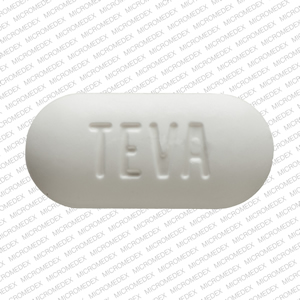Sucralfate Patient Tips
Medically reviewed by Carmen Pope, BPharm. Last updated on Nov 14, 2023.
1. How it works
- Sucralfate may be used to treat stomach conditions, such as duodenal ulcers.
- The exact way sucralfate works is not known; however, research shows it forms a film with albumin (a protein) exuded from the ulcer site. This film acts as a barrier to gastric acid, pepsin (one of the main digestive enzymes), and bile salts.
- Sucralfate belongs to the class of medicines known as disaccharide sulfates. It is also known as a protectant anti-ulcer medicine.
2. Upsides
- Used for the short-term (four to eight weeks) treatment of duodenal ulcers.
- May be given as a smaller dose long-term to prevent re-erosion of the duodenal ulcer.
- Only minimally absorbed from the stomach and duodenum; therefore, sucralfate is generally well tolerated with few side effects.
3. Downsides
If you are between the ages of 18 and 60, take no other medication or have no other medical conditions, side effects you are more likely to experience include:
- Constipation is the main side effect reported (in 2% of people); other side effects include diarrhea, nausea, itch, rash, and dry mouth. Generally, side effects are relatively rare (only reported in 4.7% of people who take sucralfate). Rarely, allergic reactions and bezoars (an accumulation of indigestible material in the gastrointestinal tract) have been reported. Hypersensitivity reactions that have occurred with Sucralfate include shortness of breath, lip swelling, itch, rash, and urticaria.
- Duodenal ulcer tends to be a recurrent disease. Once stopped, sucralfate will not influence the frequency or severity of future ulceration.
- May not be suitable for people with conditions that impair swallowing or alter the gag or cough reflex, or with a prior history of aspiration. Rarely, aspiration of sucralfate tablets has occurred.
- Sucralfate contains aluminum. After oral administration, small amounts of aluminum are absorbed. This may lead to aluminum accumulation in people with poor kidney function or who are taking other aluminum-containing products (such as antacids).
- People with reduced kidney function may be more likely to experience side effects or aluminum accumulation with sucralfate. The dosage of sucralfate may need to be reduced in the elderly or those with known kidney impairment.
- It is not known if sucralfate is safe in children.
- May reduce the absorption of some drugs including digoxin, fluoroquinolone antibiotics, phenytoin, and thyroxine. These drugs should be taken at least two hours before taking sucralfate.
- Usually taken four times daily for ulcer treatment and twice daily for ulcer maintenance.
- Use only during pregnancy if the potential benefits outweigh the risks. Animal studies have revealed no evidence of harm to the fetus in studies of pregnant women. It is not known if sucralfate is distributed into breast milk.
Note: In general, seniors or children, people with certain medical conditions (such as liver or kidney problems, heart disease, diabetes, seizures) or people who take other medications are more at risk of developing a wider range of side effects. View complete list of side effects
4. Bottom Line
- Sucralfate is used to treat duodenal ulcers. It appears to act directly on the ulcer, coating it with a protective film, and side effects are minimal.
5. Tips
- The usual dosage for ulcer treatment is four times daily on an empty stomach (at least an hour before food and at bedtime). Take as directed by your doctor. Continue for the duration recommended or until an x-ray or endoscopic exam confirms ulcer healing.
- You may also take antacids while using sucralfate; however, do not take antacids within a half-hour of a dose of sucralfate.
- Tell your doctor if you are breastfeeding, pregnant, or inadvertently become pregnant while taking sucralfate.
6. Response and effectiveness
- Sucralfate acts locally (which means it acts directly on the stomach/duodenal lining - it does not have to be absorbed to have an effect).
- Sucralfate forms an ulcer-adherent complex with the albumin exudate of the ulcer soon after tablet dissolution. The sucralfate-albumin film provides a barrier to the diffusion of hydrogen ions. In human subjects, Sucralfate given in doses recommended for ulcer therapy inhibits pepsin activity in gastric juice by 32%.
- One dose lasts approximately 6 hours.
- It may take up to eight weeks before an ulcer is fully healed.
- Each 1g dose of sucralfate neutralizes approximately 14 to 16 mEq of stomach acid.
7. Interactions
Sucralfate may reduce the absorption of some other drugs if is taken at the same time of day as them. In most cases, dosing the other medication two hours before sucralfate eliminates the interaction. Speak to your doctor about how drug interactions should be managed.
Common medications whose absorption may be affected by sucralfate include:
- antibiotics such as ciprofloxacin, gemifloxacin, ketoconazole, levofloxacin, moxifloxacin, norfloxacin, ofloxacin, or tetracycline
- aspirin
- cimetidine
- digoxin
- l-thyroxine (levothyroxine)
- nonsteroidal anti-inflammatories, such as diclofenac, ibuprofen, indomethacin, naproxen
- phenytoin
- phosphate supplements
- quinidine
- ranitidine
- theophylline.
There have been some reports of sucralfate reducing the effect of warfarin; however, this has not been confirmed by clinical studies.
Sucralfate is best administered separately (two hours apart) from other drugs.
Related/similar drugs
More about sucralfate
- Check interactions
- Compare alternatives
- Pricing & coupons
- Reviews (243)
- Drug images
- Latest FDA alerts (2)
- Side effects
- Dosage information
- During pregnancy
- Support group
- Drug class: miscellaneous GI agents
- Breastfeeding
- En español
Patient resources
Other brands
Professional resources
Other brands
Related treatment guides
References
- Sucralfate. Revised 10/2023. AvKARE https://www.drugs.com/pro/sucralfate.html
Further information
Remember, keep this and all other medicines out of the reach of children, never share your medicines with others, and use sucralfate only for the indication prescribed.
Always consult your healthcare provider to ensure the information displayed on this page applies to your personal circumstances.
Copyright 1996-2025 Drugs.com. Revision date: November 14, 2023.

